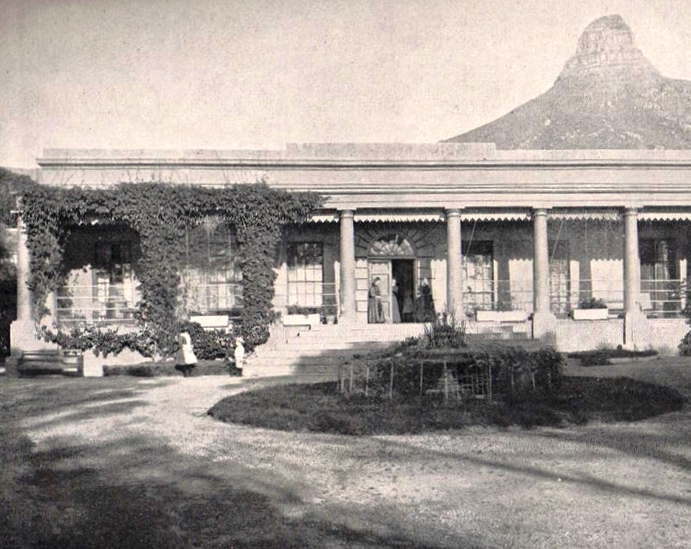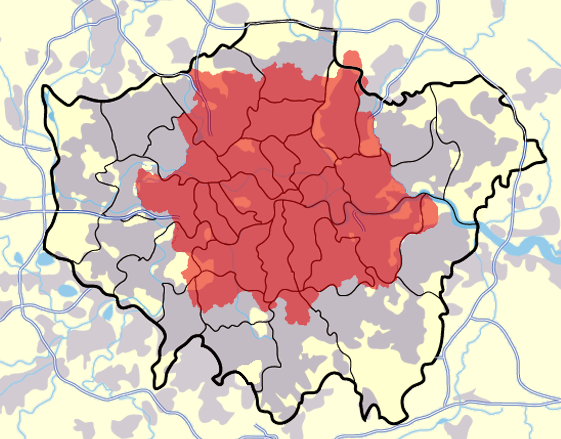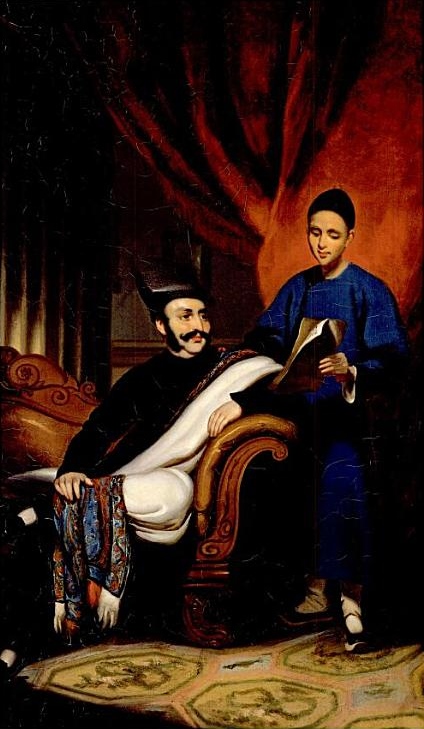|
Georgiana Solomon
Georgiana Margaret Solomon (née Thomson; born 18 August 1844 – 24 June 1933) was a British educator and campaigner, involved with a wide range of causes in Britain and South Africa. She and her only surviving daughter, Daisy Solomon, were suffragettes; as members of the Women's Social and Political Union, they were imprisoned during the campaign for women's suffrage for breaking the windows of Black Rod's office. Early life Georgiana Thomson was born near Kelso in Scotland to George Thomson and Margaret Stuart Thomson (née Scott). The ''Oxford Dictionary of National Biography'' characterises her father as "an unsuccessful gentleman farmer". She was educated at a small boarding school in Edinburgh. Career She began her teaching career at the same school where she had been educated. Later, she accepted a position as a governess in a Liverpool family. By the 1870s, the movement to expand education to young women was gaining momentum in the English-speaking world. A committee ... [...More Info...] [...Related Items...] OR: [Wikipedia] [Google] [Baidu] |
Kelso, Scotland
Kelso ( sco, Kelsae gd, Cealsaidh) is a market town in the Scottish Borders area of Scotland. Within the boundaries of the historic county of Roxburghshire, it lies where the rivers Tweed and Teviot have their confluence. The town has a population of 5,639 according to the 2011 census and based on the 2010 definition of the locality. Kelso's main tourist draws are the ruined Kelso Abbey and Floors Castle. The latter is a house designed by William Adam which was completed in 1726. The Kelso Bridge was designed by John Rennie who later built London Bridge. Kelso held the UK record for the lowest January temperature at , from 1881 until 1982. History The town of Kelso came into being as a direct result of the creation of Kelso Abbey in 1128. The town's name stems from the earliest settlement having stood on a chalky outcrop, and the town was known as Calkou (or perhaps Calchfynydd) in those early days, something that is remembered in the modern street name, "Chalkheugh Te ... [...More Info...] [...Related Items...] OR: [Wikipedia] [Google] [Baidu] |
Inner London
Inner London is the name for the group of London boroughs which form the interior part of Greater London and are surrounded by Outer London. With its origins in the bills of mortality, it became fixed as an area for statistics in 1847 and was used as an area of local government from 1855 to 1965 principally as the County of London or earlier as the Metropolitan Board of Works Area (metropolis). It now has two common definitions. The first is the statutory definition delineated in the London Government Act 1963, coming into force on 1 April 1965, comprising twelve Inner London boroughs and almost identical to the County of London that was abolished at the same time. The second is the definition used by the Office for National Statistics comprising eleven of the statutory Inner London boroughs and two of the statutory Outer London boroughs, and the City of London. [...More Info...] [...Related Items...] OR: [Wikipedia] [Google] [Baidu] |
West Hampstead
West Hampstead is an area in the London Borough of Camden in north-west London. Mainly defined by the railway stations of the same name, it is situated between Childs Hill to the north, Frognal and Hampstead to the north-east, Swiss Cottage to the east, South Hampstead to the south-east, Kilburn to the west and south-west, and Cricklewood to the north-west. The area is mainly residential with several small shops, restaurants, cafes, bakeries concentrated on the northern section of West End Lane and around West End Green. It is served by three stations: West Hampstead on the Jubilee line, West Hampstead Overground station and West Hampstead Thameslink station. It is part of the Kilburn postal district (NW6). History West End hamlet An area, known as "le Rudyng" (indicating a woodland clearing) in the mid-13th century, had by 1534 come to be called West End. It was then a freehold estate Estate or The Estate may refer to: Law * Estate (law), a term in common law ... [...More Info...] [...Related Items...] OR: [Wikipedia] [Google] [Baidu] |
Outer London
Outer London is the name for the group of London boroughs that form a ring around Inner London. Together, the inner and outer boroughs form London, the capital city of the United Kingdom. These were areas that were not part of the County of London and became formally part of Greater London in 1965. An exception is North Woolwich, which was in the County of London but was transferred to Newham in 1965. London Government Act 1963 The Outer London boroughs were defined by the London Government Act 1963. The main difference between Inner and Outer London boroughs between 1965 and 1990 was that the outer boroughs were local education authorities. The statutory Outer London boroughs are: ONS definition (statistics) The Office for National Statistics and the Census A census is the procedure of systematically acquiring, recording and calculating information about the members of a given population. This term is used mostly in connection with national population and housing censu ... [...More Info...] [...Related Items...] OR: [Wikipedia] [Google] [Baidu] |
Kent
Kent is a county in South East England and one of the home counties. It borders Greater London to the north-west, Surrey to the west and East Sussex to the south-west, and Essex to the north across the estuary of the River Thames; it faces the French department of Pas-de-Calais across the Strait of Dover. The county town is Maidstone. It is the fifth most populous county in England, the most populous non-Metropolitan county and the most populous of the home counties. Kent was one of the first British territories to be settled by Germanic tribes, most notably the Jutes, following the withdrawal of the Romans. Canterbury Cathedral in Kent, the oldest cathedral in England, has been the seat of the Archbishops of Canterbury since the conversion of England to Christianity that began in the 6th century with Saint Augustine. Rochester Cathedral in Medway is England's second-oldest cathedral. Located between London and the Strait of Dover, which separates England from mainla ... [...More Info...] [...Related Items...] OR: [Wikipedia] [Google] [Baidu] |
Sidcup
Sidcup is an area of south-east London, England, primarily in the London Borough of Bexley. It is south-east of Charing Cross, bordering the London Boroughs of Bromley and Greenwich. Before the creation of Greater London in 1965, it was in the historical county of Kent. The name is thought to be derived from meaning "seat shaped or flat topped hill"; it had its earliest recorded use in 1254. The population of Sidcup, including its neighbourhoods Foots Cray, North Cray, Albany Park, Longlands, Ruxley, Blackfen and Lamorbey, was 43,109 in 2011. History Origins Sidcup originated as a tiny hamlet on the road from Maidstone to London. According to Edward Hasted, "Thomas de Sedcopp was owner of this estate in the 35th year of king Henry VI. .e. in the 1450sas appears by his deed." Hasted described Sidcup in the latter part of the 18th century as "a small street of houses, among which is an inn of much resort", referring to the former Black Horse pub on the high street. Si ... [...More Info...] [...Related Items...] OR: [Wikipedia] [Google] [Baidu] |
Bedford School
:''Bedford School is not to be confused with Bedford Girls' School, Bedford High School, Bedford Modern School, Old Bedford School in Bedford, Texas or Bedford Academy in Bedford, Nova Scotia.'' Bedford School is a public school (English independent day and boarding school for boys) in the county town of Bedford in England. Founded in 1552, it is the oldest of four independent schools in Bedford run by the Harpur Trust. Bedford School is composed of the Preparatory School (ages 7 to 13) and the Upper School (ages 13 to 18). There are around 1,100 pupils, of whom approximately one half are boarders. In 2014, James Hodgson succeeded John Moule as headmaster after he moved on as headmaster of Radley College, another independent school for boys. The school has produced six Nobel Prize winner, five recipients of the Victoria Cross, twenty-four rugby internationals, the winners of eight Olympic gold medals, and a former England cricket captain, Alastair Cook. Bedford S ... [...More Info...] [...Related Items...] OR: [Wikipedia] [Google] [Baidu] |
Mark Girouard
Mark Girouard (7 October 1931 – 16 August 2022) was a British architectural historian. He was an authority on the country house, and Elizabethan and Victorian architecture. Life and career Girouard was born on 7 October 1931. He was educated at Ampleforth College, read Classics at Christ Church, Oxford, and then worked for the magazine '' Country Life'' from about 1958 until 1967, firstly as a writer on architecture and then, from 1964, as its architectural editor. He was Slade Professor of Fine Art from 1975 to 1976 and elected a Fellow of the Society of Antiquaries of London in 1987. Girouard was elected a Fellow of the Royal Society of Literature in 2011. He was on the board of trustees of The Architecture Foundation from 1992 to 1999 and a founder, and the first chairman, of the Spitalfields Historic Buildings Trust. He was the grandson of Henry Beresford, 6th Marquess of Waterford through his mother, Lady Blanche Girouard. His ''Life in the English Country House ... [...More Info...] [...Related Items...] OR: [Wikipedia] [Google] [Baidu] |
Sir Jamsetjee Jeejebhoy School Of Art
The Sir Jamsetjee Jeejeebhoy School of Art (Sir J. J. School of Art) is the oldest art institution in Mumbai, India, and is affiliated with the University of Mumbai. The school grants bachelor's degrees in fine art and sculpture, and Master's degrees in fine art. History Early history The School founded in March 1857, was named after Sir Jamsetjee Jeejebhoy, a businessman and philanthropist who donated Rs. 100,000 for its endowment. Operations were managed by a committee headed by the Chief Justice of Bombay. The School's first class was in drawing, and began on 2 March 1857. Classes were held at the Elphinstone Institution. John Griffiths became Principal of the School in 1865. He later became famous for copying the murals in the Ajanta Caves temple complex, a project which lasted from 1872 to 1891, and which the School's students assisted in. In 1866, management of the school was taken over by the Government of India. Also in 1866, Lockwood Kipling, who had become a pro ... [...More Info...] [...Related Items...] OR: [Wikipedia] [Google] [Baidu] |
Supreme Court Of South Africa
The Supreme Court of South Africa was a superior court of law in South Africa from 1910 to 1997. It was made up of various provincial and local divisions with jurisdiction over specific geographical areas, and an Appellate Division which was the highest appellate court in the country. The Supreme Court of South Africa was dissolved in 1997 when the current Constitution of South Africa came into force. The provincial and local divisions, as well as the supreme courts of the former TBVC states ("Bantustans"), became separate High Courts, while the Appellate Division became the Supreme Court of Appeal (SCA). The High Courts were subsequently restructured by the Superior Courts Act, 2013 into nine provincial divisions of a single High Court of South Africa. The SCA is no longer the highest court because it is subordinate to the jurisdiction of the Constitutional Court. History The Supreme Court was created by the South Africa Act 1909 when the Union of South Africa was formed ... [...More Info...] [...Related Items...] OR: [Wikipedia] [Google] [Baidu] |





